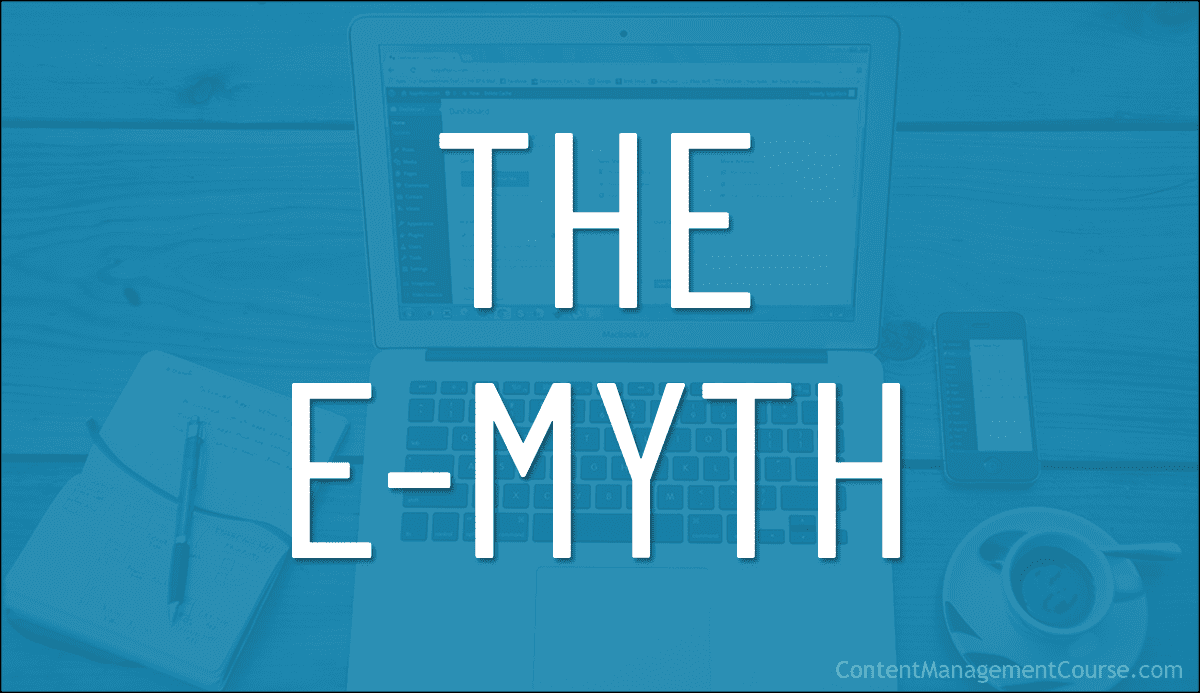Introduction to Content Management
 In today’s digital age, effective content management has become a cornerstone for small business success.
In today’s digital age, effective content management has become a cornerstone for small business success.
This practical guide provides an introduction to content management for small businesses and offers a blueprint on how to effectively organize, manage, and optimize your digital content.
It also provides a comprehensive overview on content management systems (CMS), content strategy development, and best practices for content creation, curation, and distribution.
This series of articles is also designed to address common challenges faced by small businesses in the digital sphere, including limited resources, content visibility, and audience engagement. It will help you gain a practical understanding of how to develop a personalized content management plan that aligns with your business objectives, to enhance your online presence and drive growth.
Whether you’re looking to launch a new business, elevate an existing one, or searching for tools and insights to make content work smarter, not harder, for your business, we recommend using this series as a roadmap to your digital empowerment.
NOTE: For accompanying online tutorials that expand on the topics covered in this guide, click on the links in the content.
Why Do You Need This Guide?
The importance of having quality content cannot be overstated. Businesses, both big and small, are constantly competing for the attention of their target audience.
To stand out from the crowd, therefore, it is crucial for your business to have an effective content management strategy in place.
This practical guide dives into the concept of content management, exploring its significance and providing practical insights for small businesses looking to develop their own content management blueprint.
What is Content Management?
Content management can be defined as the process of organizing, creating, managing, and distributing valuable content to reach and engage a specific audience. It encompasses various activities, such as content creation, editing, storage, and publishing.
A well-executed content management strategy helps your business establish brand identity, attract potential customers, and retain existing ones.
For a small business, having a content management blueprint is vital for several reasons. Firstly, it allows you to have a clear understanding of your target audience and their needs.
By creating content that resonates with your audience, your businesses can build trust and credibility, ultimately driving customer loyalty and increasing sales.
Secondly, a content management blueprint helps your businesses maintain consistency across different channels.
Whether it’s a blog post, social media update, or email newsletter, delivering a consistent message and tone helps reinforce your brand image and fosters a sense of familiarity among customers.
Furthermore, effective content management enables your business to stay relevant and up-to-date in your industry.
By regularly sharing valuable and informative content, your business can position itself as a thought leader, attracting industry experts and influencers to collaborate and promote your brand.
Developing a content management blueprint for your small business starts with defining your goals and objectives. This includes identifying your target audience, specifying the types of content to be created, and determining the desired outcome.
Once your goals are clear, your business can start developing a content calendar, outlining the topics, formats, and distribution channels to be utilized.
To ensure the success of your content management blueprint, it is essential to regularly analyze and measure the effectiveness of the content.
Your business can monitor metrics such as website traffic, social media engagement, and conversion rates to evaluate the impact of their content and make necessary adjustments.
In conclusion, content management is a critical component of any successful small business marketing strategy.
By developing a content management blueprint, your business can effectively engage itstarget audience, build brand awareness, and drive business growth.
Importance of Content Management for Small Businesses
No doubt, you’ve heard that “content is king.”
Content is everywhere. All websites need content, and all content needs management.
Whether you are a small business owner or an entrepreneur looking to establish your brand online, content management is essential for your success.
Let’s explore, then, the significance of content management and highlight the benefits it can offer your business.
Content Management Blueprint: A Practical Approach
Businesses often struggle with limited resources. However, by implementing a content management blueprint tailored to your needs, you can effectively manage your online presence.
A content management blueprint provides your business with a practical approach to creating, organizing, and distributing your content consistently across various platforms.
Enhancing Brand Awareness and Visibility
One of the primary reasons your business should prioritize content management is to enhance your brand awareness and visibility.
By consistently producing high-quality and relevant content, you will engage your target audience, build credibility, and establish your brand as an industry expert.
This increased visibility can lead to more website traffic, improved search engine rankings, and ultimately, more conversions.
Driving Customer Engagement and Loyalty
Effective content management allows your business to engage customers in meaningful ways.
By creating valuable content such as blog posts, articles, videos, and social media updates, you will establish a connection with your audience.
Engaging content not only keeps your customers informed and entertained but also fosters loyalty, as they perceive your business as a reliable source of information.
Improving Search Engine Optimization (SEO) Rankings
Content management and SEO go hand in hand. By optimizing your content with relevant keywords, meta tags, and descriptions, you can improve your search engine rankings.
When potential customers search for products or services related to your business, having a solid content management strategy in place will make your website more visible, increasing the likelihood of attracting organic traffic.
Streamlining Workflow and Collaboration
Efficient content management systems streamline workflow and collaboration within small businesses.
By centralizing content creation, editing, and scheduling processes, you can eliminate duplicate efforts, reduce errors, and ensure consistent messaging across all channels.
Additionally, content management tools often offer collaboration features, allowing team members to work together seamlessly, even remotely.
In conclusion, content management plays a crucial role in the success of small businesses.
By implementing a content management blueprint tailored to your specific needs, you can enhance brand awareness, drive customer engagement and loyalty, improve SEO rankings, and streamline workflow and collaboration.
Investing time and resources in content management will undoubtedly yield long-term benefits, and help your small business thrive in the digital landscape.
This is the end of part 1. To continue reading this article series, click on the pagination section below.




